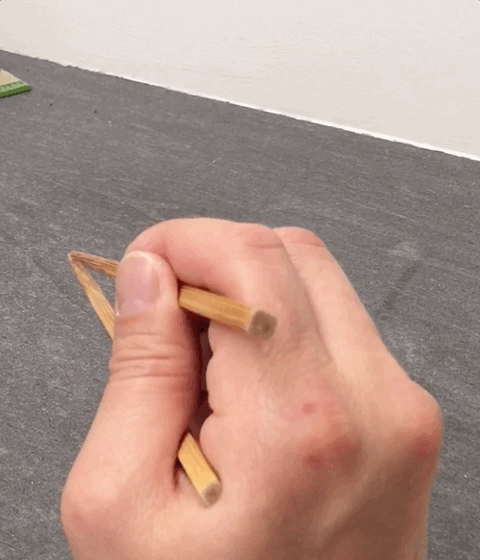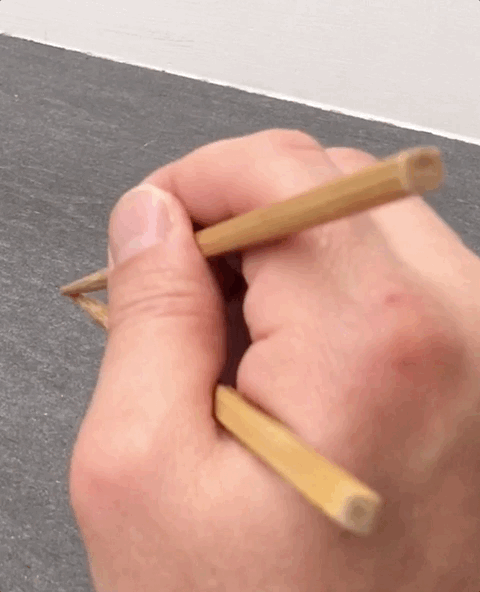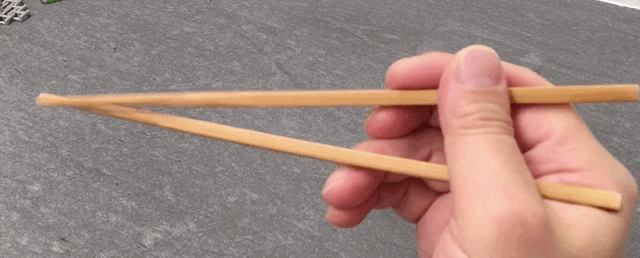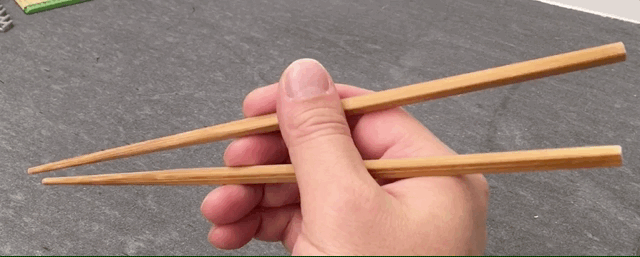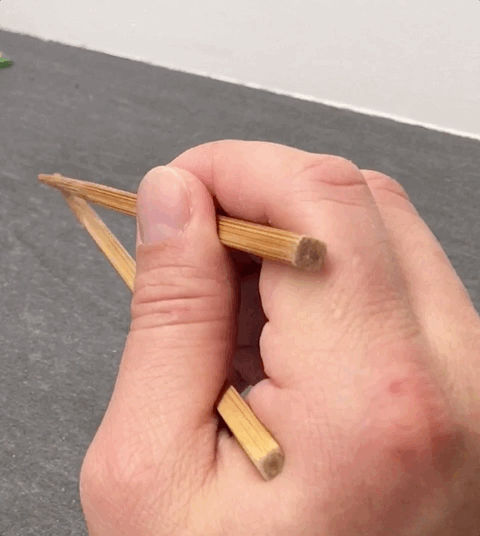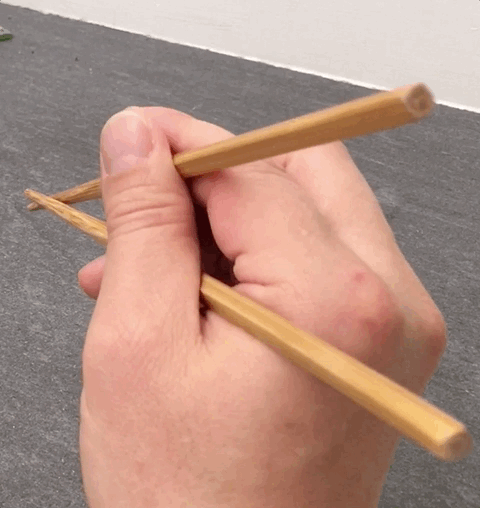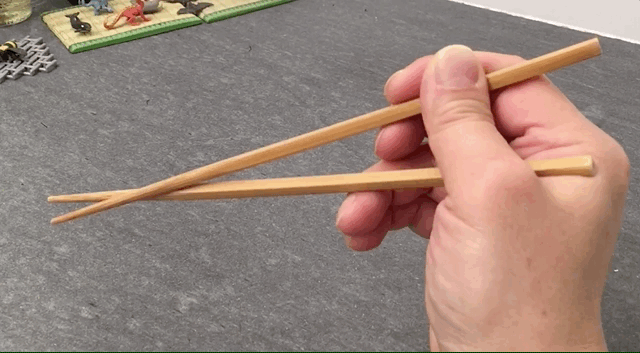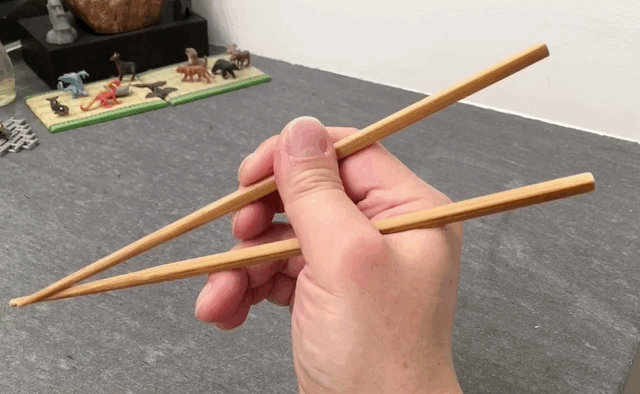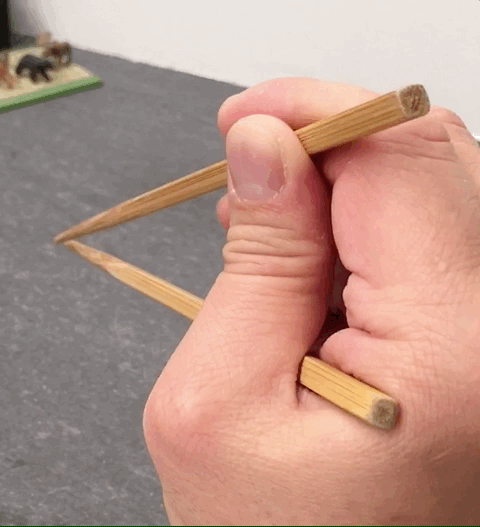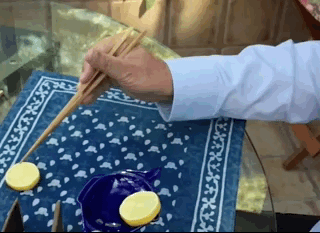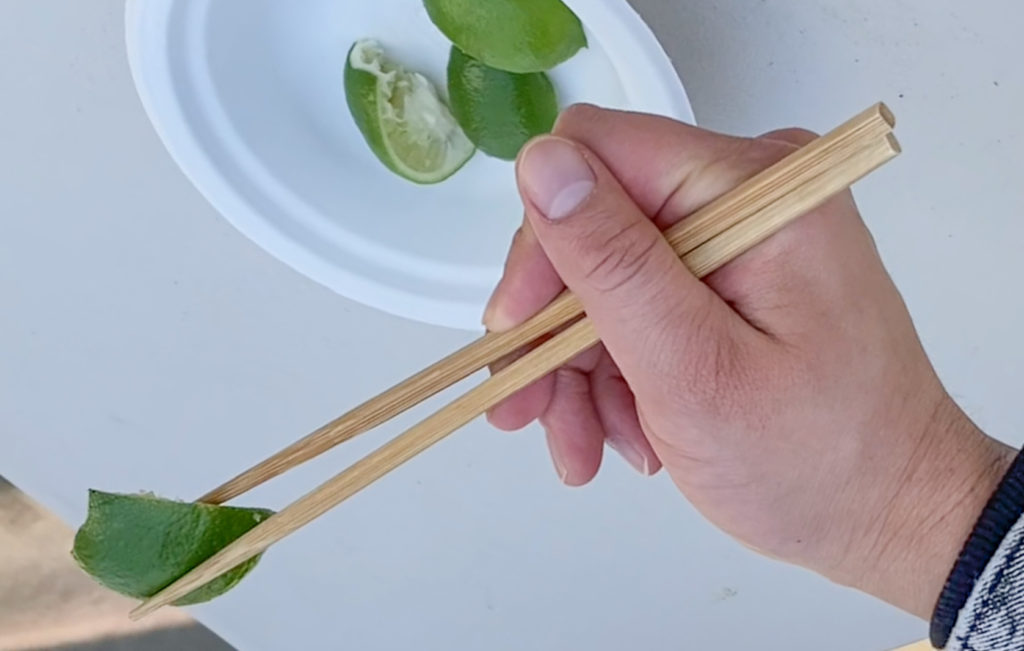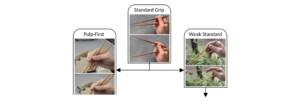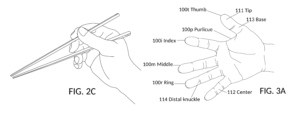Last Updated on August 9, 2021 by Staff
The state of chopstick research lacked depth, as documented in History of Chopstick Research. As recounted in The Art and Science of Chopsticking, we have steadily increased our knowledge on how human hands wield chopsticks. For instance, the world now knows that the planetary gear train principle enables the Standard Grip with power and dexterity.
With this new article, we attempt to advance chopstick research one more step forward. We will dispel the folly of “crossed type” vs “parallel type” which has dominated both public discussion and academic research to date. This false dichotomy is unable to elucidate the richness of alternative grips. It alone cannot explain relationships and differences between dozens of documented alternative grips.
In place of this simplistic crossed vs. parallel argument, we propose a better way to describe two common variants of many alternative grip. Both variants are often called “crossed grips”. But they are very different. One is not “crossed” in a functional sense. And both are more related to the given alternative grip, than they are related to similar variants of other alternative grips.
Table of Contents
Misleading Discourse on Crossed vs. Parallel
Previously it was thought that there were two main ways to hold chopsticks, the parallel type (below left), and the crossed type (below right). The illustrations shown below is from a research paper that we discussed at length in the History of Chopstick Research article.
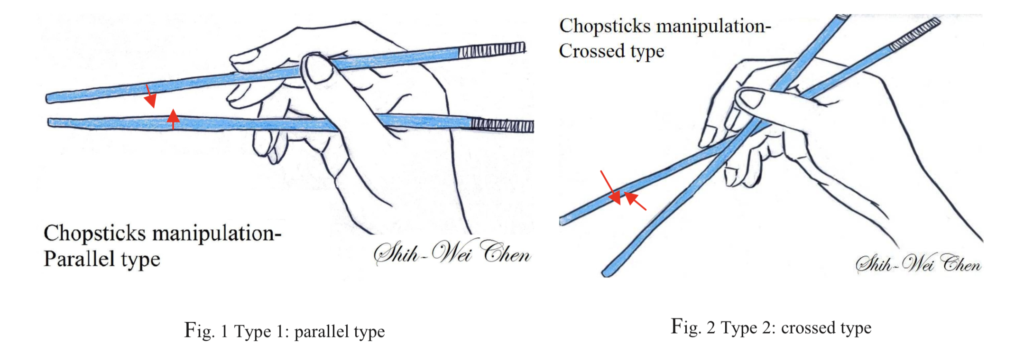
It turns out that researchers glanced over many more variables underscoring dozens of alternative grip types. Instead, they looked only at the simplistic crossed-vs-parallel discussion. For instance, the parallel illustration shown above to the left depicts a “closed posture“, while the illustration shown above to the right depicts an “open posture“. Not acknowledging this closed-vs-open difference is an indication of the lack of rigor in research. And this closed-vs-open difference is but one of many variables that together describe any given snapshot of an alternative grip in motion. Disregarding all these variables, except for the one nebulous “crossedness” variable, contributed to the inconclusive conclusion of that research.
What Exactly is Crossedness?
Suppose we allow that “crossedness” is one variable among many variables that describe a chopstick grip. A question still remains to be asked. What exactly is crossedness?
Examine the two pictures shown below. They depict two out of three variants of Standard Grip. At this time, we will only call them variant S (left) and variant U (right). Not depicted here is the variant C (for Classic), standing in for the given alternative grip from which S and U are derived. Both variant S and Variant U look crossed. These pictures are taken from the vantage point of a user themselves, looking slightly down. We call this a “rear view“, because the observer is at the rear end of chopsticks, looking toward tips of chopsticks, down their length.
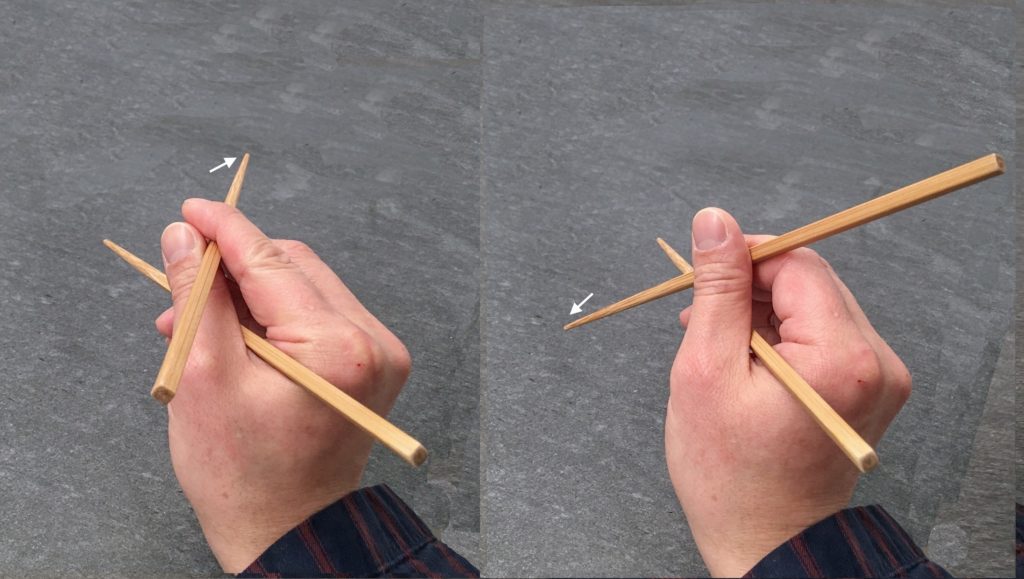
In these pictures, the user extends tips of chopsticks apart, toward what we call the “open posture”. White arrows in these picture indicate the movement of the tip of the top chopstick.
Now we add the variant C (i.e. the classic variant) to the mix. All three variants are shown in their “open” posture, so we can control for just one variable – whether the two sticks look crossed, or not. “Clearly” the variant C is a so-called parallel type, while the two variants to its left are of the crossed type. Or… are they?
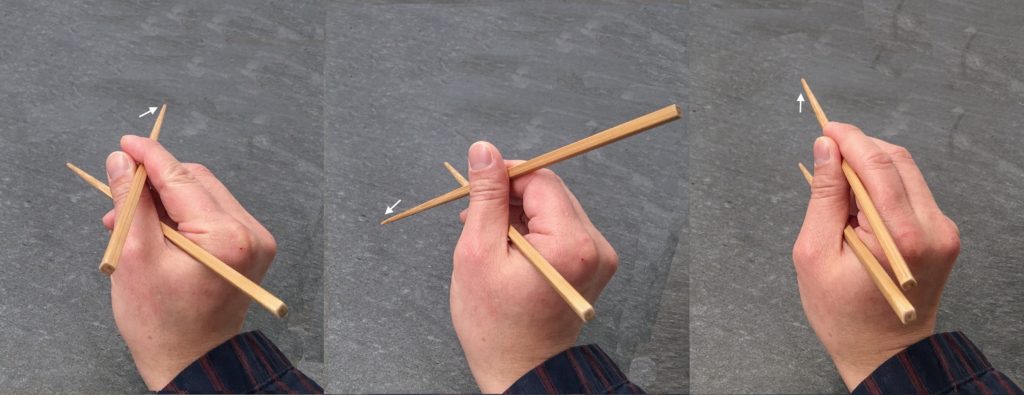
It turns out that chopsticks operate in 3 dimensions. When we describe the crossed look of two sticks, we need to specify the view from a particular direction in the 3-dimensional space. The same variants above are shown again below, now seen from the side, instead of from the rear. Amazingly, variant S (left) no longer looks like a crossed type. It looks eerily similar to variant C (right). Both are “clearly” of the parallel type, when seen from this side view. Or… are they? Recall that in previous set of pictures, the variant S was “clearly” identified as a “crossed” type.

Functional vs. Non-functional Crossings
Identifying a grip as simply belonging to the crossed type or to the parallel type also ignores the fact that crossing of chopsticks can be either “functional” or “non-functional“. Some crossings are key functional elements of alternative grips, while other crossings are just visual artifacts. The fact that chopsticks cross visually does not by itself indicate whether the crossing is essential to the function of this grip type.
Take the three pictures shown below, for instance. They depict three users using alternative grips. It may appear at a glance that the leftmost user and the middle user both deploy a crossed type grip. It may appear that the rightmost user users a parallel grip.

But in reality, the leftmost user wields the Scissorhand grip, while the middle and the rightmost user both wield the Dangling Stick grip. The middle picture shows “visually crossed” chopsticks, because the middle user holds chopsticks with her thumb closer to the mid section of both sticks (longitudinally). The rightmost user has his thumb positioned further back towards the rear ends of sticks.
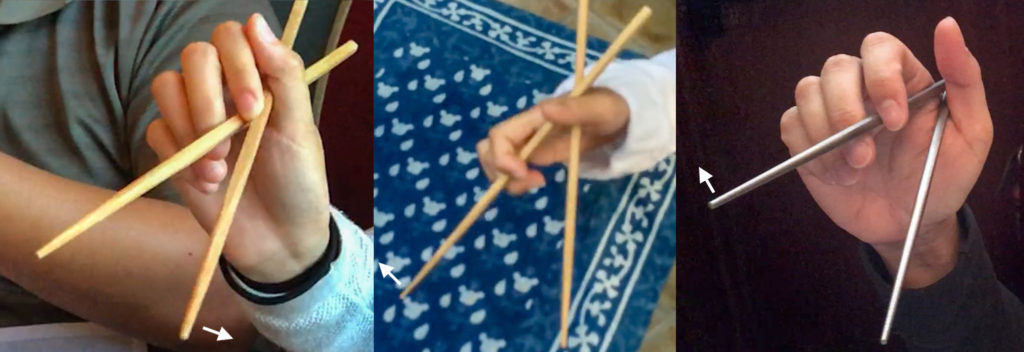
For the leftmost user, crossing the top chopstick down under the bottom stick is functionally how she extends tips of chopsticks apart using Scissorhand. For the middle user and the rightmost user, rear ends of chopsticks can be nipped off at the crossing point, and their Dangling Stick grip would continue to work just fine – the crossing is non-functional.
Upright vs. Sideway Tip Movements
Given above insights, we choose to describe grips not by whether sticks cross, but instead by how the tip of a top chopstick moves, in 3-dimensional space.
Let’s look at the three variants of Standard Grip mentioned earlier. Seen from the side, variant S on the left moves the tip of the top chopstick up, as it swings the stick outward. Variant U in the middle moves the tip down, as it swings the stick inward toward the palm. Variant C (classic) swings the tip straight up.

Seen from the rear, variant S on the left swings the tip toward right, outward from the perspective of the palm. On the other hand, variant U in the middle swings the tip toward left, inward from the perspective of the palm. Variant C (class) only swings the tip upward.
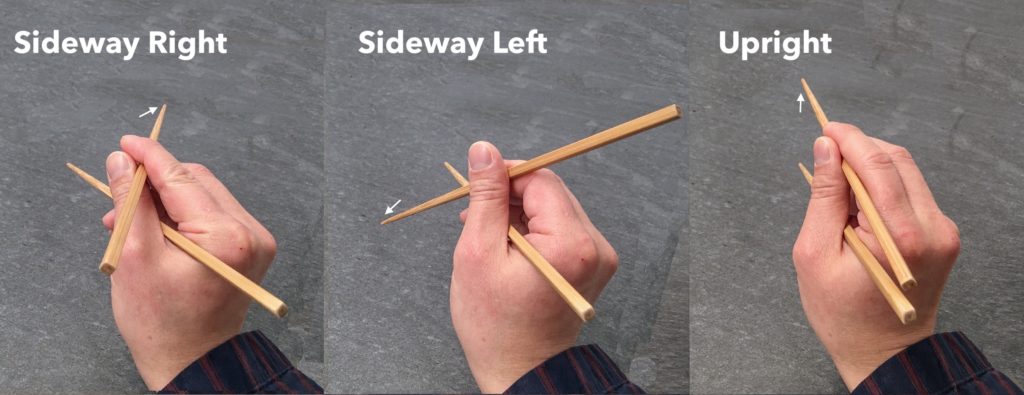
Given the anatomy of the human hand, these are the three tip swings the hand is able to perform, for most alternative grips we have documented on the family tree. It is true that with some alternative grips, some of the three variants may be hard to execute, for the average human with average dexterity. But all three variants are conceivably possible.
Here is how we described this observation in the Scissorhand article:
We have belatedly come to realize that these crossed grips do not belong in one family branch by themselves, despite what most chopstick users believe, or what researchers think. Crossed grips share less in common amongst themselves, than each of these crossed grips share with some member in the parallel-grip branch that we’ve been trying to build. Once this “crossed vs. parallel” folly is cast aside, suddenly every crossed grip we’ve studied snaps in place next to a parallel grip we have analyzed and published.
Classic vs. Sideway vs. Under Swing
We have chosen to name the three variants as Classic Swing, Sideway Swing, and Under Swing, thus the cryptic variant codes used earlier: variant C, variant S and variant U. The rationale for these names will be described in details now.
Classic Swing
The Classic Swing is the archetypical variant for a given alternative grip. In this article, we use Standard Grip as an example. But the same analysis and variant associations can be done for most alternative grips. In Classic Swing, the tip of the top chopstick is flung straight up.

For each variant, we show two examples of how users may hold chopsticks. The first is “aft-stick“, shown above. “Aft-stick” refers to the fact that the thumb and the purlicue hold the rear ends of chopsticks. The second is “mid-stick“, shown below. This is where the thumb and the purlicue hold the mid section of chopsticks, instead.
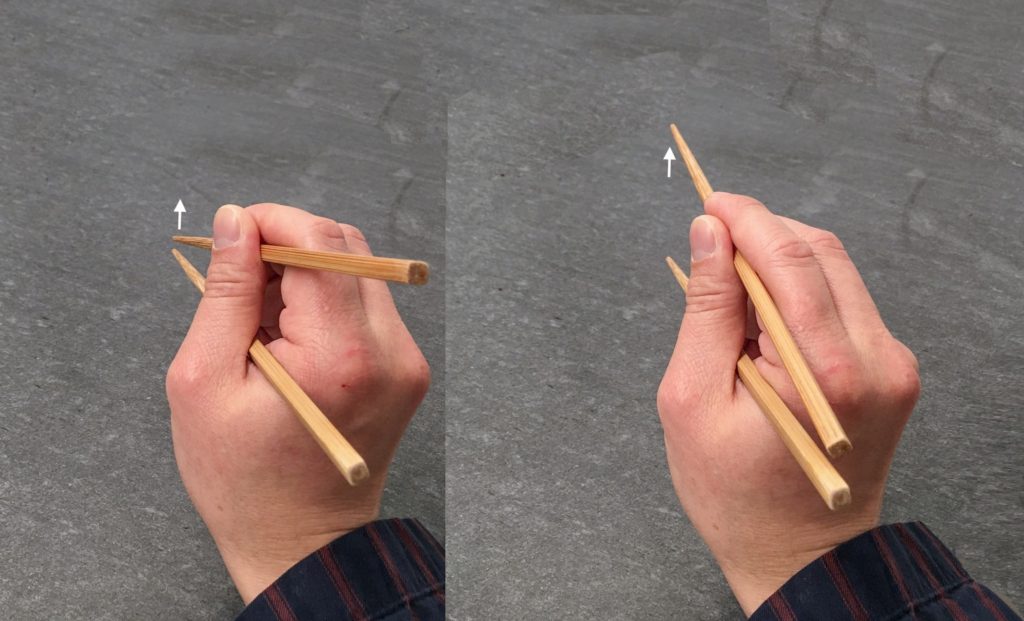
For each variant, we show two views. The first is a rear view, shown above. The second is a side view, shown below. These allow readers to assess both sideway movements and vertical movements of chopsticks. On the left of each view is the “closed posture“. This is the posture where users “pinch” food items using chopsticks. On the right of each view is the “open posture“. This posture shows the range of extension achievable with the grip, allowing a user to extend chopsticks apart to envelop a food item.
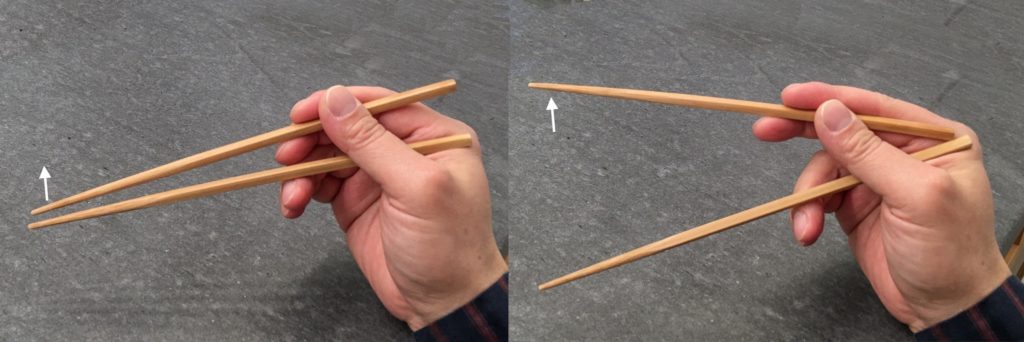
From all of these pictures for the Classic Swing, we observe that the tip of the top chopstick is extended only straight up, and not sideways.

Under Swing
The Under Swing variant is named for the fact that the tip of the top chopstick is pushed downward and leftward, until it assumes a position “under” the bottom chopstick. This is the key characteristic that distinguishes this variant from the other two variants: Classic and Sideway. In both of these other two variants, the top chopstick always remain above the bottom chopstick.
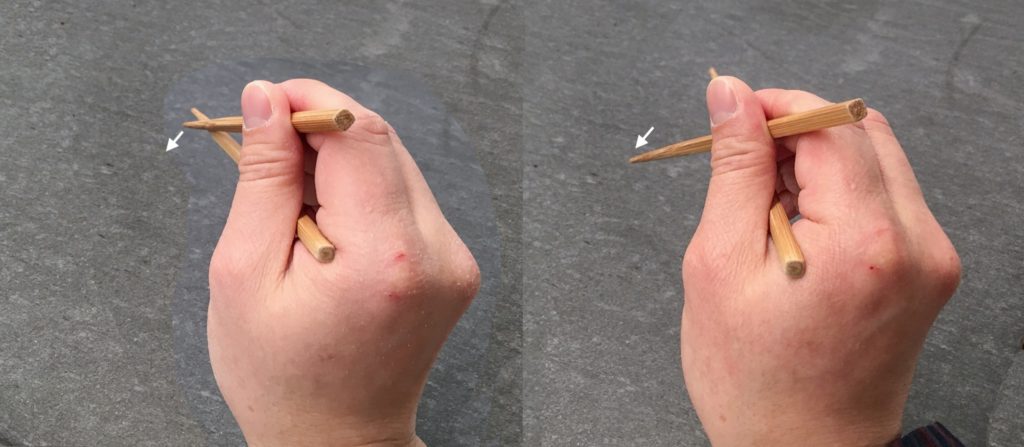
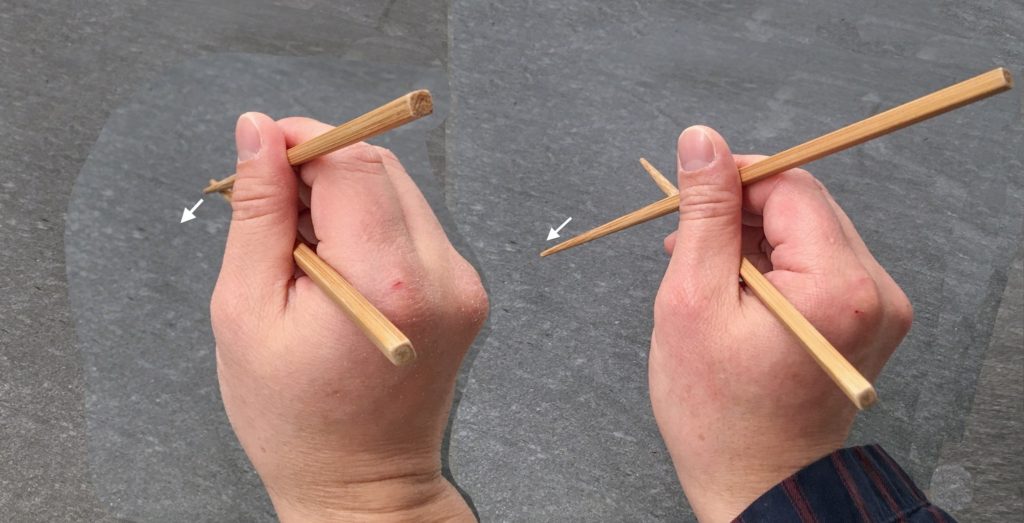
The Under Swing variant calls for a very different finger dynamics for pinching and securing food items when eating, compared to the Classic Swing. It pinches food with the tip of the top chopstick positioned under said food item, not above the food item. This can be confirmed visually with the closed posture of Under Swing shown on the left side – the tip of the top chopstick is under the bottom chopstick, even at the closed posture.
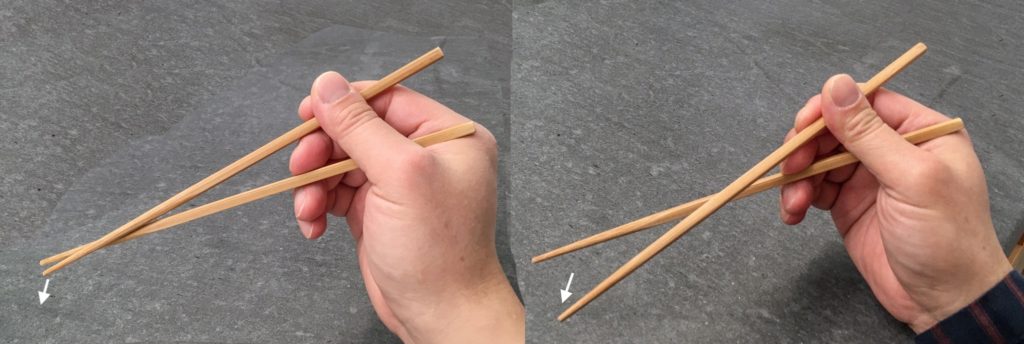
Notice that in most Under Swing variants of alternative grips, the two chopsticks actually touch, at the crossing point. In many of these situations, the crossing point appears to serve as a moving fulcrum of a lever. But it really isn’t serving as a fulcrum in the Archimedean lever sense. Individual articles on Under Swing variants of alternative grips will go into more details on this point.

Sideway Swing
We have chosen to name the variant where the tip is flung to the right, the Sideway Swing. While we recognize that the Under Swing variant also moves the tip sideways (to the left), people tend to focus on its key characteristic which is the under swing. On the other hand, for the Sideway Swing, the movement of the tip toward the right is unmistakable. Thus we have chosen this short but descriptive name for it.
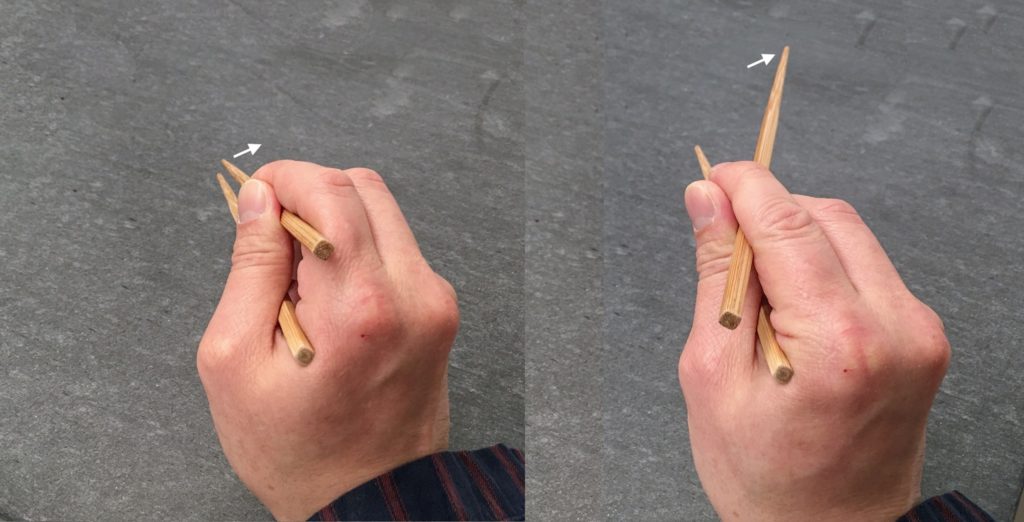
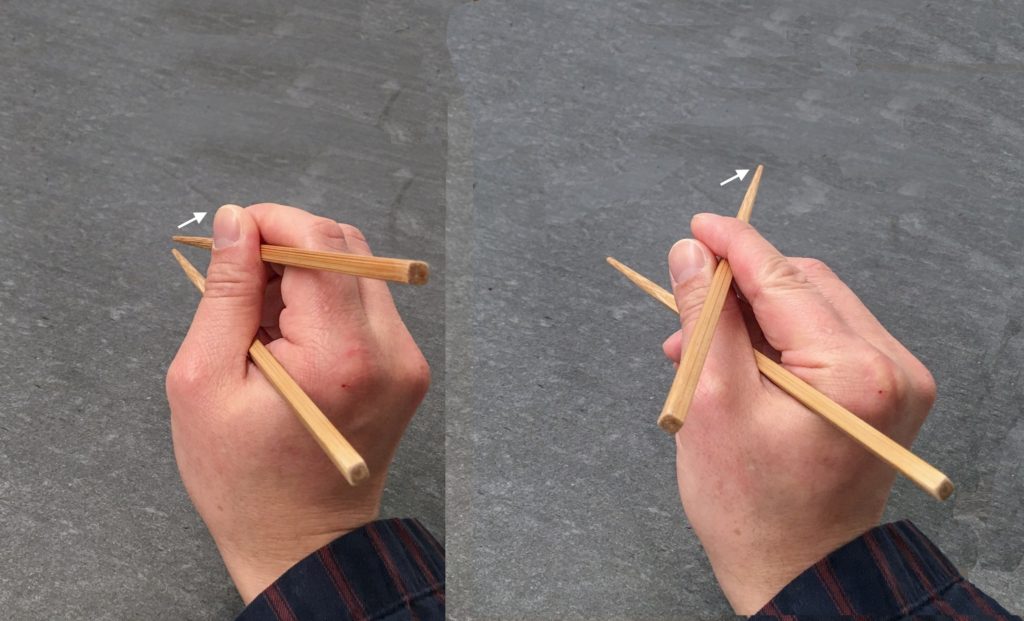
Sideway Swing looks very similar to the Classic Swing, when observed from the side. Some people may not notice the sideway movement of the tip, but instead classify this variant incorrectly with Classic Swing.
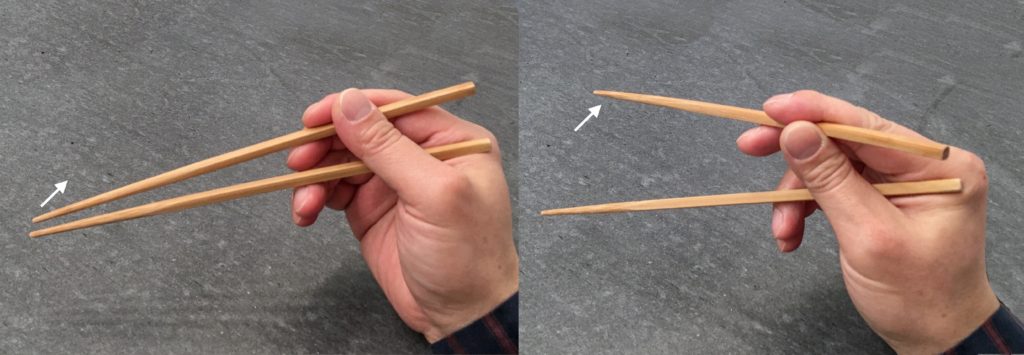

Variables Describing these Variants
The following table details variables that describe the state of a variant, at the open posture. This is not a comprehensive list. We will expand it in the future.
| Classic Swing | Under Swing | Sideway Swing | |
| Looks crossed from the side | – | Crossed | – |
| Looks crossed from the rear | – | Crossed | Crossed |
| Functional crossing | – | Functional | Non-functional |
| Position of top chopstick with respect to bottom chopstick | Above | Under | Above |
| Tip of top chopstick moves sideways | – | Fling Left | Fling Right |
| Tip of top chopstick moves vertically | Up | Down | Up |
Videos of Classic Swing
Videos of Sideway Swing
Videos of Under Swing
Variants vs. Grips
Some alternative grips we have documented can almost be described as Under Swing variants of other alternative grips. For instance, if Chicken Claws shown below left is a Classic Swing variant, then Scissorhand Grip shown below right is almost a corresponding Under Swing variant.
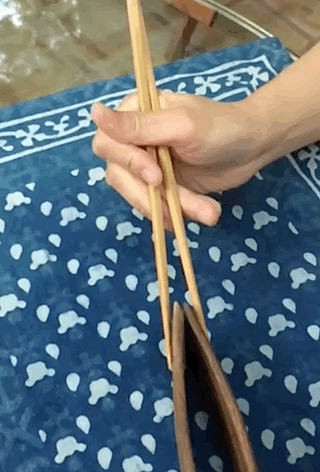
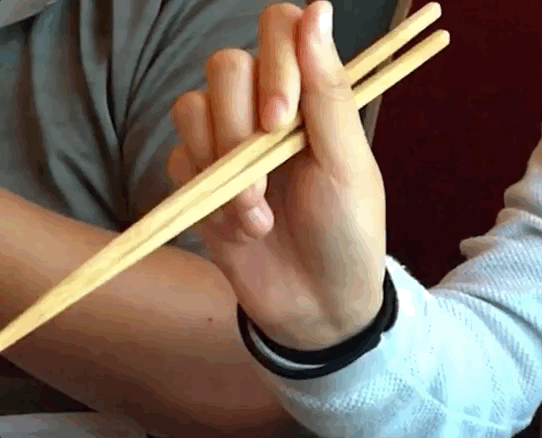
The boundary between a new grip type and a new variant is not clear cut. It is said that “a language is a dialect with an army”. The same may be said of grip type vs variant. In the case at hand, we have made the choice to name this Under Swing variant a new grip type (aka Scissorhand Grip). But we could well have called it a Under Swing variant of Chicken Claws. We didn’t. We think (Edward) Scissorhand Grip sounds cooler.
Using Chicken Claws again as the Classic Swing variant, the Dangling Stick grip can be described as its corresponding Sideway Swing variant. Both grips look deceptively “crossed”. But as we have explained earlier, these crossings are non-functional (aka only aesthetic). Note how Chicken Claws has a standard upright swing. But Dangling Stick has a noticeable sideway swing.

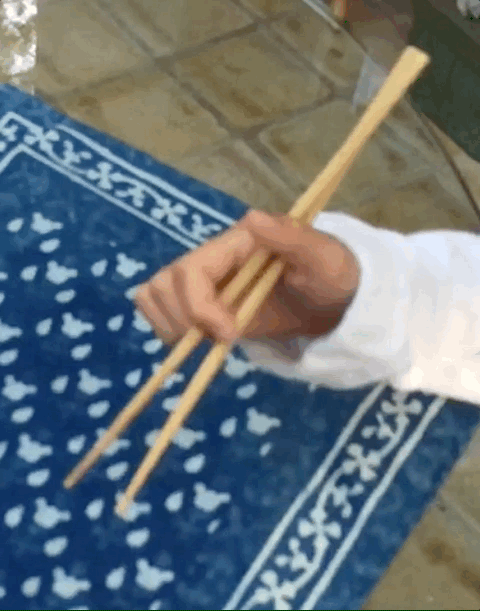
Again, we have chosen to name this Sideway Swing variant as its own grip type (aka Dangling Stick). One reason is because there is at least one derived grip from Dangling Stick, the Muppet Grip. We need Dangling Stick to serve as an anchor in the family tree, thus its elevated status from a variant to a grip type.
Here is another example. Here we have the Count-to-4 grip, which is is one step away from Standard Grip, due to the “bent thumb”. But if one were to ignore its bent thumb, Count-to-4 can be described almost as the Sideway Swing variant of Standard Grip, when Standard Grip is the Classic Swing variant.
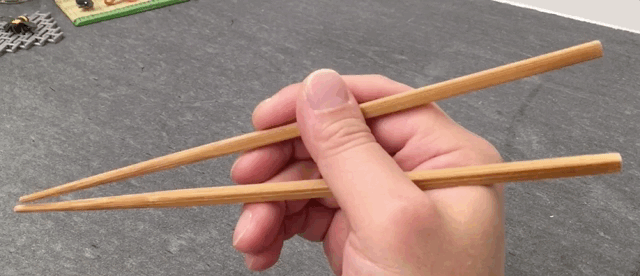
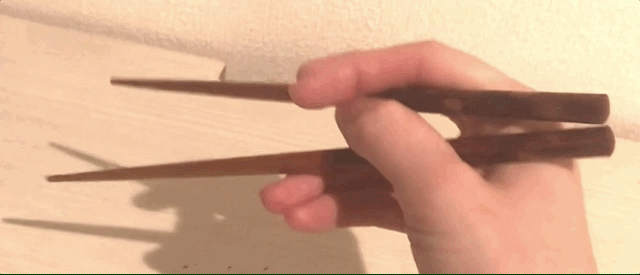
As we publish more alternative grips, we find more variant associations. Using (plain) Vulcan as a Classic Swing variant, Cupped Vulcan can be said to be an Under Swing variant of plain Vulcan. However, like the Count-to-4 example, this not just a pure change in swing style. Cupped Vulcan also differs from plain Vulcan, in its disuse of thumb pad. Cupped Vulcan follows Chicken Claws in the abandonment of the thumb pad.
Theoretical vs. Observed
We have shown you the Classic Swing of Standard Grip, plus two theoretical variants derived from it, the Under Swing and the Sideway Swing. Videos and pictures shown here are contrived examples demonstrated by the staff, of how these two variants ought to look like, using Standard Grip as a starting point. These are artist’s renderings. Our staff do not wield these grips themselves in real life.
That being said, we are confident they exist out there in the world. We just haven’t documented them ourselves yet. We have collected enough recordings, including Scissorhand and Dangling Stick discussed earlier, such that we can declare them common variants of the Classic Swing, using Chicken Claws as the classic version.
We leave you with some food for thought, however. It seems like The Japan Guy has seen the Under Swing variant of Standard Grip in use, and have tried to imitate it. Perhaps it’s not as rare as we think.
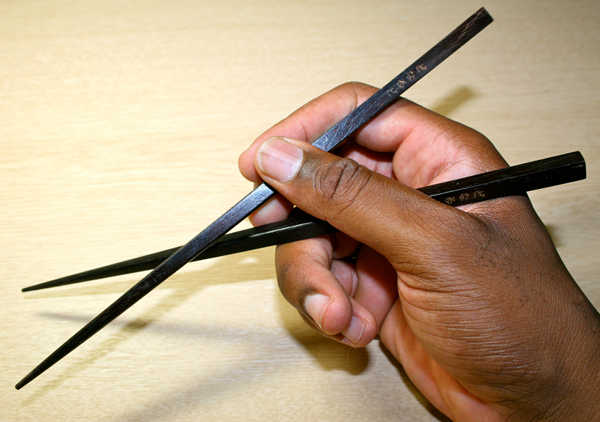
Conclusion
In the introduction we wrote that “we propose a better way to describe two common variants of many alternative grip.” We can now clarify that sentence and relationship, using terms we have defined.
What we are proposing is that all alternative grips with a Classic Swing have two theoretical variants: an Under Swing variant and a Sideway Swing variant. We believe that in time all these theoretical variants will be found in the real world, and documented.
There you have it. You have wasted your valuable time on a long article on two common variants of any given alternative grip with a Classic Swing.
Out with the crossed-vs-parallel folly!
In with the Under Swing and the Sideway Swing!
2021-05 updates: Lateral chopstick grips
We wrote this physics of chopsticks article in 2020. When the article was first written, we didn’t have many sideway swing and under swing grips to show. We predicted that all theoretically-possible sideway swing and underswing variants of classic swing grips will eventually be found in the wild. And indeed, we have since found and documented man such variants. Cupped Vulcan is one example, and has already been incorporated into this article as an underswing variant of plain Vulcan.
More than a year after the initial publication, we discovered the biggest grip family of all time, the Lateral grips. All grips in this family share one common Closed posture. But the way practitioners extend chopsticks apart is wildly different from sibling grip to sibling grip. This family provides the best example of classic swing, sideway swing, and underswing. Their discovery is a great confirmation of the prediction power of science.
Here is a “classic swing” variant of Lateral grips. Depicted below is its “type species”, a grip we call Lateral Chick.
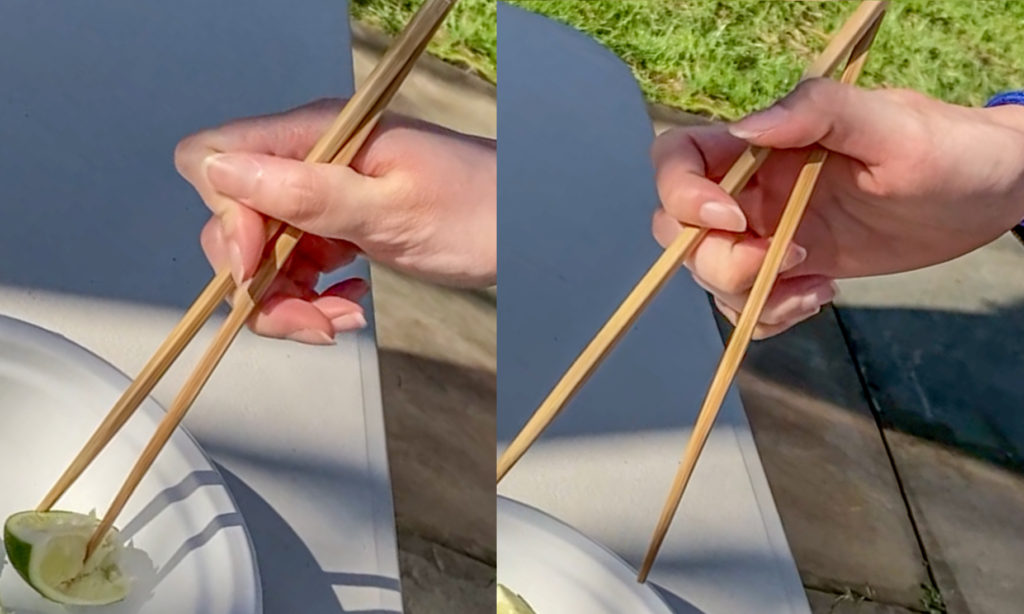
Here is a “sideway swing” variant of Lateral grips. We named it Lateral Money grip, for the “give me money” gesture the index finger and the thumb make.
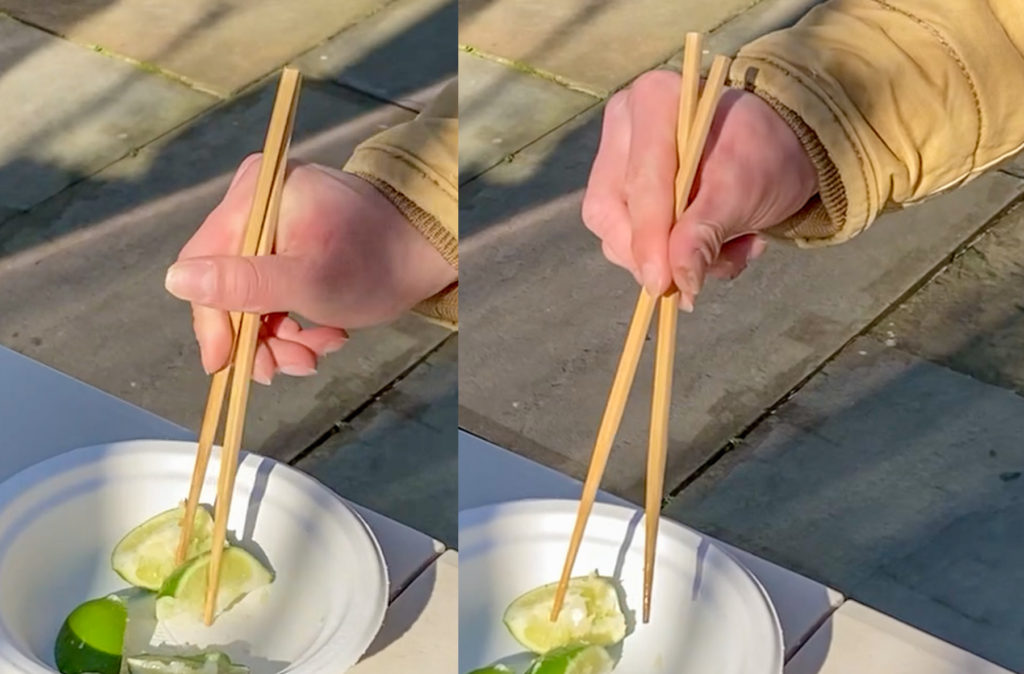
Here is an “underswing” variant of Lateral grips, just like Scissorhand is an under-swing variant of Chicken Claws. We named it Lateral Thumb Wrestler, as it adopts the thumb wrestling finger movements for operating chopsticks.
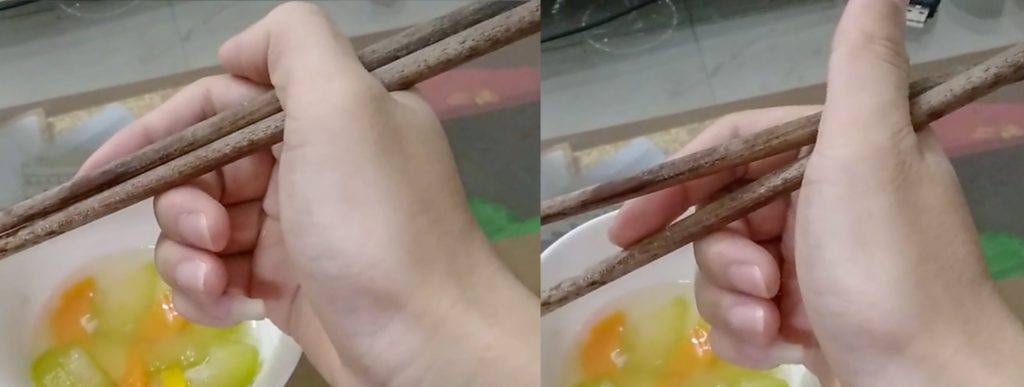
Here is another practitioner of Lateral Thumb Wrestler demonstrating his craft.

#UnderSwingGrip
#SidewaySwingGrip
* update 2021-08-09: We have finally amassed enough analysis of chopstick grips, that we can attempt to properly classify them using factors that identify orthogonal dimensions, in the description of any given chopstick grip. Swing variants are one factor in this classification table. See the article Classification of Chopstick Grips.


